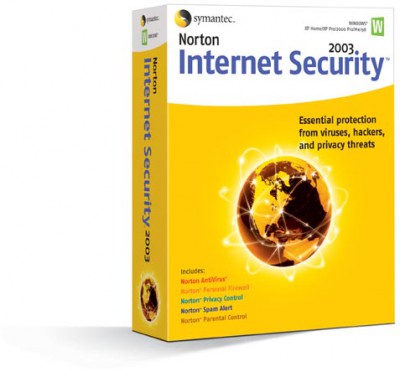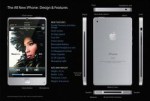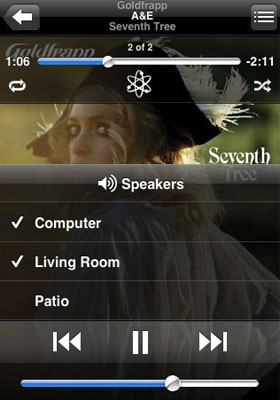
Norton Internet Security 2009 - Strong on protection, light on system resources, award winning! Stay protected from the latest online threats. Norton Internet Security runs quietly in the background to detect and block today's complex threats and to protect your identity when you buy, bank, or browse online. The friendly and efficient product design helps minimize confusing security alerts and system slowdowns that can get in the way of your online experience.
Key Technologies:
• Antivirus
• Spyware protection
• Two-way firewall
• Identity protection
• Antiphishing
• Network monitoring
• Bot protection
• Rootkit detection
• Browser protection
• Internet worm protection
• Intrusion prevention
• OS and application protection
• Web site authentication
• Pulse updates
• Norton™ Insight
• SONAR™ behavioral protection
• Antispam
• Parental Controls & confidential information blocking
Key Benefits:
• Proven fastest, lightest security suite available—Spend more time using your computer and less time waiting for your security software to perform.
• Pulse updates for up-to-the-minute protection—Delivered every 5 to 15 minutes to detect and eliminate new threats. NEW
• Intelligence-driven for faster, fewer, shorter scans—By leveraging a unique online intelligence system, Norton™ Insight technology targets only those files at risk. NEW
• Stops viruses, worms, spyware, bots, and more—Keeps your system protected against all types of malicious threats.
• Prevents virus-infected emails and instant messages from spreading—Feel secure while you keep in touch.
• Blocks browser exploits and protects against infected Web sites—Surf the Internet with confidence.
• Blocks online identity theft—Buy, bank, and browse online wherever and whenever you want. IMPROVED
• Secure network connections—Monitor your home network and more safely connect to Wi-fis. IMPROVED
• Blocks threats and hackers—Two-way firewall automatically makes security decisions for you. IMPROVED
Features:
Engineered for Speed
* New! Proven fastest, lightest security suite available
* New! Intelligence-driven Norton™ Insight technology targets only those files at risk for faster, fewer, shorter scans
* New! Installs in under one minute on average, requires less than 10 MB of memory, and only 100 MB of disk space plus definitions
Up-to-the-minute Protection
* New! Delivers up-to-the-minute protection with rapid pulse updates every 5 to 15 minutes.*
* New! The Norton™ Protection System provides multilayered protection technologies that work in concert to stop threats before they impact you. †
* New! Real-time SONAR (Symantec™ Online Network for Advanced Response) helps prevent bots from taking control of your PC.
* Improved! Prevents threats from entering or leaving your firewall.
* Detects and automatically removes online threats.
* Improved! Defends against Web-based attacks with patent-pending technology.
* Automatically detects and removes spyware, viruses, Trojans, bots and Internet worms
* New! Boots and repairs badly infected PCs.
* New! Specialized deep-cleaning technology delivers our most complete scan possible to repair heavily infected computers.
Norton Identity Safe
* Improved! Keeps your online identity safer than ever when you buy, bank, browse, and game online.
* Advanced phishing protection keeps your personal identification out of the hands of fraudulent Web sites.
* Stores and encrypts your passwords and other confidential data.
* Improved! Fills in online forms at your request to save time and protect you from keystroke loggers.
Control without disruptions
* Puts every element of your security at your fingertips
* New! Schedules resource intensive tasks for when you’re not using your PC.
* New! Review the security status of every process on your PC.
* New! Silent mode suspends alerts and updates to avoid interrupting or slowing games and movies.
* Smart two-way firewall automatically makes security decisions for you.
Secure Networking
* Improved! Helps you secure your home network.
* Conceals and secures your PC on public Wi-Fi networks.
Parental Controls
* New! Create individual user profiles with enhanced parental controls.
Spam Blocking
* Filters spam better than ever.
Microsoft® Windows Vista® Home Basic/Home Premium/Business/Ultimate
Microsoft® Windows® XP with Service Pack 2 Home/XP Pro/XP Media Center Edition
* 300 MHz or faster processor
* 256 MB of RAM (*512 MB RAM required for the Recovery Tool)
* 200 MB of available hard disk space
* Standard Web browser
Email scanning supported for POP3- and SMTP-compatible email clients.
Support for AntiSpam feature:
* Microsoft Outlook® 97 or later
* Microsoft Outlook Express 6.0 or later
Supported instant messaging clients:
* AOL®
* Yahoo!®
* Microsoft®
* Trillian™
Browser support for Browser Defense and Phishing Protection features:
* Microsoft Internet Explorer® 6.0 (32-bit only) and later
* Mozilla Firefox® 2.0 and later
Download: (Size: 69,7 MB)








